- Home
- Lawrence Block
Step by Step Page 23
Step by Step Read online
Page 23
Back in the room, Lynne tells me one of the officials asked her if she thought I’d be back next year. “Well, there are two possibilities,” she said. “either you’ll never see him again or he’ll be back every year. It could go either way.”
How well she knows me.
After a shower and a little downtime we go out again to watch the finish. There’s a photo op, a trophy being presented to the overall winner, a guy in a singlet with flames on it who ran straight through without a break and clocked 40 laps in the time it took me to do 20. I can believe it, as he seemed to pass me every lap or so. I never did catch Flame Guy’s name, but I tell Lynne there were no flames on his singlet when he started out. It was his incendiary speed that did it.
I wonder if there’s anyone my age or older who covered as many miles as I did. Lynne says one fellow who looked older logged 21 laps, and I tell her it’s just as well I hadn’t known that, or I probably couldn’t have kept myself from going around one more time.
We stay over that night, and visit friends in Connecticut on the way home. They steer us to a celebrated ice cream place, so I can replace fat and carbs expended during the race. Actually, I’ve replaced enough of both to sustain me for another thousand miles, but the ice cream here is supposed to be special, and it seems silly to pass up something good after all the garbage I’ve ingested in the past 48 hours.
It lives up to its billing. “Some sins are worth the price,” Lynne says.
TUESDAY AFTERNOON
I’ve never felt a greater sense of accomplishment than I did at the conclusion of the race, and it hasn’t faded. I wound up with bad blisters on my right heel, but the cushioning I applied kept me going, and I didn’t have to break them after the race was over; by now they’re absorbed. I did have to do some surgery on a few toe blisters, and one toe’s a mess, but it’s manageable. Yesterday I was hobbling around, and didn’t even attempt a training walk, but I couldn’t see any reason not to go to the gym, where I did an upper body workout that did me a world of good. I also got on the elliptical trainer, because I was surprised to discover in the course of the race how much of a beating my quads took. (In training walks and shorter races, my quads are just fine. Chalk up another one to distance.) Turned out using the elliptical trainer (ET?) was utterly pain-free. I’ve used it a little in recent months, and it does work the quads nicely, so I’m going to try to put in more time on it in the future.
Today I’m not limping anymore, and might try a short walk now. We’ll see.
I do natter on, don’t I?
And now I see a post on the Ultrawalking board from Ollie, who has convinced the folks at an end-of-November 24-hour race outside of Dallas to include a walker category, thus conveying Centurion status on anyone completing 100 miles in the 24 hours. There’ll be judges, but the only requirement will be that one foot is in contact with the ground at all times. (Most of the time, I’ve got both feet in contact with the ground.)
It’s been said of marathons, as of childbirth, that you’re ready to do it again when enough time has passed so that you’ve managed to forget how horrible it was the first time. And that clearly hasn’t happened yet. And there’s no way I could manage a hundred miles in 24 hours.
But my form would pass the judging. And I ought to be ready for another long ’un about then.
I have to say I’m tempted…
17
IT WAS NOT QUITE THREE MONTHS later when Lynne and I drove up to Niagara Falls and checked into a hotel on the Canadian side. On Sunday morning, a fleet of buses carried the entrants across the border to Buffalo’s Albright Knox Art Gallery, perhaps a mile from the apartment where my mother spent the last twenty-some years of her life. A few hundred men and women in shorts and singlets spent an hour looking at abstract paintings, pausing now and then to tie their shoes or dash to the bathroom. Then we went outside and lined up in the cold rain, listened to two national anthems, and began the running of the Fallsview Casino Marathon. The course looped around one of the city’s more attractive neighborhoods for a couple of miles before taking us across the Peace Bridge to Canada; then it hugged the shore of the Niagara River all the way to the Falls.
I crossed the start line, and in due course the bridge, and, after five hours and forty-five minutes, the finish line. It was an ordeal; I pushed myself, hoping to come in under six hours, and the wind and rain took a lot of the joy out of the day. But I was never in any doubt that I’d finish. It was, after all, just a marathon.
Why would anyone be masochist enough to take part in an ultramarathon? Why put in the interminable hours of training, only to punish oneself for still more hours over fifty or a hundred kilometers, or fifty or a hundred miles? Why trace endless circles around a lake for twenty-four hours?
(Or even longer. There’s another whole category called multiday races, and the meaning of the term is easier to make out than the motivation of the participants. Forty-eight-hour races, seventy-two-hour races. A six-day race in a park in Queens. A 3,100-mile race—yes, you read that correctly—also in Queens; a friend of Andy Cable’s participated one year, and Andy reported to me that although the winner had already crossed the finish line, his friend still had a little over five hundred miles to go. Think about that, will you? The race is over, the winner’s lying down with his shoes and socks off, and this chap’s still got to run from St. Louis to Kansas City and back again.)
Why subject one’s body and soul to this sort of thing? Ultramarathoners have tired of the question, but if you get one to respond he may tell you that the requisite discipline gives direction to his life, that pushing beyond his own barriers expands his sense of the possibilities, that the long hours on the course are a veritable spa session for his spirit. Flowery and/or cryptic explanations are commonplace; the loneliness of the ultrarunner does seem to put one in touch with one’s inner poet, one’s inner philosopher, one’s inner Hallmark card.
You need a reason? Here’s one. Complete one ultra and you can drop this three-word phrase into conversations for the rest of your life:
Just a marathon.
THE WAKEFIELD RACE gave me a lift unlike anything else I can recall. I have never in my life had a greater sense of accomplishment. A friend gave me a look when I told him as much. I’d published all those books, he reminded me. I’d traveled all over the world. Those, it seemed to him, were real accomplishments, and I actually thought a night and a day walking around an unpronounceable lake somehow put them in the shade?
Well, yeah, and I think I know why. I had vastly exceeded my own expectations, had done considerably more than I believed I was capable of. I’d expected to cover marathon distance, intended to go fifty kilometers, dreamed of somehow covering fifty miles. But I never even entertained the fantasy of a hundred kilometers, and yet I’d somehow reached and passed that distance. I told him as much, but I’m not sure he got it.
But he was by no means the only person I told. You know the story about the elderly man in the confessional, reporting in vivid detail about his affair with a young woman a third his age? “Excuse me,” the priest says, interrupting, “but from the way you express yourself, it’s my impression that you are Jewish.”
“I am,” says the old man.
“Then why are you telling me this?”
“Father, I’m telling everybody!”
I too was telling everybody, partly out of pride, but as much out of a need to tell myself. Because my mind kept doing what it could to minimize the accomplishment. An inner voice kept telling me that I hadn’t really done what I thought, that I’d stopped to sleep, that I’d quit the course when I still had time for another lap, that I’d just gone through the motions. I had in fact gone through those motions for 63.2 miles, but the voice remained unimpressed. If I’d done it, how hard could it be? And what could it possibly amount to?
I CAME HOME from Wakefield with sore muscles and blistered feet, but nothing that didn’t mend in fairly short order. I eased back into training, and entered two half-
marathons as a run-up to the marathon, one in Jersey City in September and another in Staten Island a week before the Niagara Falls race. The Staten Island race was just a long training run as far as I was concerned, my last before the marathon, and I took it at an easy pace.
After the marathon, Lynne and I hung around in Buffalo for my fiftieth reunion. I don’t suppose I hid the fact that I’d completed a marathon a week earlier. I might even have dropped the phrase just a marathon into a conversation or two. It wouldn’t surprise me.
MY WAKEFIELD RACE report notwithstanding, I didn’t give serious thought to the November Ultracentric race in Texas. That same weekend, New York Road Runners was holding a 60K race in Central Park, and I decided to take a shot at that instead.
I showed up for it on a cold Sunday morning, and the crowd at the start provided a pretty good indication of the difference between ultramarathons and shorter races. The club holds races in the park all through the year, most of them ranging between four and ten miles, and there are always several thousand men and women who show up for the challenge and the T-shirt. Just three weeks before the 60K, some thirty thousand people had massed at Fort Wadsworth in Staten Island for the New York City Marathon, and they constituted the mere fraction who’d either qualified for the race or won the lottery; there’d have been well over a hundred thousand runners if they’d been able to accept all applicants.
There were perhaps fifty hardy souls gathered at Fifth Avenue and Ninetieth Street for the start of the Knickerbocker 60K.
Isn’t that remarkable?
Granted, the New York Marathon has a lot going for it. It’s an important race with an international reputation, held on a scenic course that traverses the five boroughs and draws enthusiastic spectators throughout its route. The Knickerbocker, in contrast, consists of nine four-mile loops of the Central Park course, plus a brief out-and-back at the start to make up the 37.2-mile distance. There was no press coverage, no TV cameras at the start, no crowd support, no band playing. A drink table at the start and another halfway around the loop provided water, Gatorade, and the ultrarunner’s favorite, flat Coke.
You didn’t even get a T-shirt.
Still, wouldn’t you think that a few of the tens of thousands denied entry to the marathon would have chosen to run eleven miles farther for a tenth the entry fee?
FOR ME, THE Knickerbocker was more of a challenge than I would have preferred, because time was a factor. The crew would cease manning the finish line after eight and a half hours, and if you took longer than that, you wouldn’t get your time officially recorded. It’s a little difficult in retrospect to figure out why this mattered to me, but it did at the time, and I was determined to get in under the wire.
Now that’s not a terribly stringent time limit for a runner. If you’re in shape to run the distance, you can certainly do so in the allotted time. For a walker, and a geriatric one in the bargain, covering that many miles at a 13:30 clip takes some effort. My pace had been faster in all the year’s previous races, and was 13:10 at Niagara Falls, but this race was almost half again as long, and the colder weather meant more clothes, which ate up time whenever I stopped to pee.
The result was that I had to push myself more than I would have liked. The most pleasant part of a long race is the time spent at cruising speed, when you can just relax and go with the flow. I couldn’t allow myself to do that, I had to walk at the leading edge of my comfort zone, and that took the joy out of it. But I crossed the line at 8:21:50—and, remarkably, there were a few souls who took even longer than I did.
A week later I was back on that same park loop for a four-mile race. That wrapped up 2005, and my records indicate I took part in twenty-five races, with a total distance of 277.2 miles. On the second Sunday in January I returned to the park for the Fred Lebow Memorial five-mile race, the same race that I’d started off walking a year earlier. Then my time had been 1:00:21; now I was able to cut that by almost three minutes, to 57:36. And a week later I flew to Mobile, Alabama, for what promised to be an interesting race…even though it was, after all, just a marathon.
18
WHY MOBILE?
Well, what I read about the race sounded good. And it came at the right time, three weeks before the Mardi Gras Marathon in New Orleans. And it was in Alabama, and if I intended to rack up a marathon in every state, I’d have to include Alabama sooner or later. It was, after all, first alphabetically. I couldn’t start there, I’d already logged three states (all of them beginning with N) a quarter of a century ago, but I could certainly kick off 2006 with Alabama.
And did I intend to knock off marathons in all fifty states?
There was, I had to admit, a certain appeal to the notion. I’d read about runners in the grip of this particular obsession, and I have to say they sounded like my kind of people. They’d organized a club, which promptly schismed itself into two clubs, one for runners trying for fifty states, the other adding the District of Columbia to the mix. (Most of the Fifty-Staters seem to belong to both clubs.)
Here’s one thing these folks managed a couple of years ago. Frustrated by the lack of a marathon in Delaware (The First State, according to the license plates) they drummed up local support and managed to organize one. At its first running, a handful of Delaware residents turned up, and so did a vast crowd of maniacs from all over the country, thrilled at the opportunity to add this elusive state to their list.
How could a man who’d spent a couple of years driving from Buffalo Gap, Saskatchewan, to Buffalo Corners, Pennsylvania, by way of Buffalo Springs, Texas, and New Buffalo, Michigan, fail to be moved by all this? I found their pursuit a laudable one, and in fact I seemed to recall that it had occurred to me back in my first marathon year of 1981, when along with England and Spain I’d nailed North Dakota, New York, and New Jersey. I’d thought then that I might add other states until I had them all—but instead I gave up the pastime altogether.
I don’t know how committed I felt now. Was the goal realistic for me? Could I hang in there long enough to get all the states? If I managed five races a year, I was looking at a ten-year project. Would I still be capable of covering twenty-six miles in my late seventies? Would I feel like trying?
There was no way to answer those questions. In the meantime, though, if I was going to be entering marathons anyway, why not pick ones in different states? And why not start in Mobile?
MOBILE HAD ANOTHER thing going for it. It was one of a handful of marathons with a racewalking category. In both of the day’s races, the marathon and the half-marathon, judges would be stationed on the course to make sure that entrants in the racewalking division adhered to the rules of the sport, and the fastest male and female walkers would be awarded prizes.
I’d thus far been careful to avoid racewalker contests in New York, suspecting that my form would get me disqualified in a dedicated walking event. For all I knew, that might happen at Mobile, but if it did I’d simply be bunched with the runners in the scoring, and it would still be a marathon, and I’d still get the T-shirt. And I had the feeling the judging wouldn’t be as strict as it might be in a race exclusively for walkers.
It was a very enjoyable race; the weather was good and the course an attractive one. Some people complained about the hills, but I found them manageable after all those races in Central Park. My performance pleased me; I’d wanted to trim a little time off Niagara Falls’ 5:45, and had wistful hopes of breaking 5:30. I finished in 5:21:10, good enough for second place in the male racewalker division…but there were in fact only three walkers, two men and one woman, so it’s not as though I actually beat anybody. (A dozen or more walkers participated in the half-marathon.)
I didn’t have to beat anybody to feel elated with my accomplishment. I went home in triumph, and eventually my award arrived, a sort of abstract collage of colored paper. It came framed, but the glass was broken by the time it arrived, because it had simply been tucked into a manila envelope and dropped in the mail.
“What ki
nd of moron would do that?” Lynne wondered.
“A bona fide one,” I told her, explaining that the awards had been handmade by the residents of a home for the retarded, one of the race’s beneficiaries. She felt awful. I, on the other hand, felt proud, and found a spot on a shelf for my prize.
A WEEK AFTER Mobile, I walked a ten-mile race in Central Park, and followed that a week later with the Manhattan Half-Marathon. Then Lynne and I flew to New Orleans for her first look at her hometown since Hurricane Katrina…and for my first shot at the Mardi Gras Marathon.
Katrina had severely reduced tourism in the city, but you wouldn’t have known that from the turnout for the race. Like Mobile, it recognized walkers with a separate section, and at registration I received not one but two numbered bibs; racewalkers were to wear them fore and aft, so that they could be readily distinguished from runners by the officials and judged accordingly.
I didn’t expect to win anything this time. There were more entrants, so I couldn’t pick up a prize just by showing up and reaching the finish line. Nor did I expect to beat my time in Mobile. Everything had gone right at that race, and I’d somehow managed to clip fifty-five seconds per mile off my Niagara Falls time, and I doubted I could do that well again.

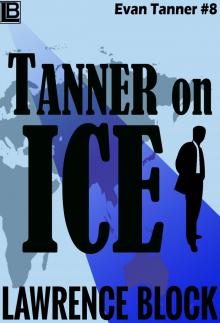 Tanner on Ice
Tanner on Ice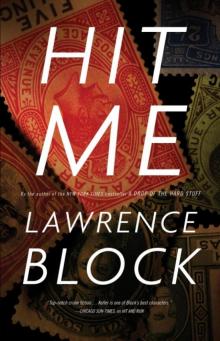 Hit Me
Hit Me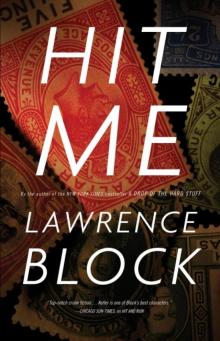 Hit and Run
Hit and Run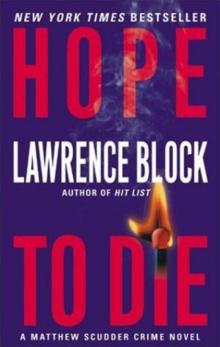 Hope to Die
Hope to Die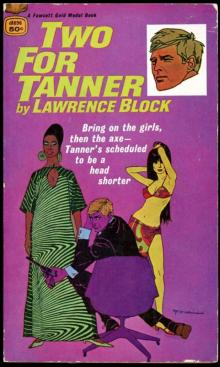 Two For Tanner
Two For Tanner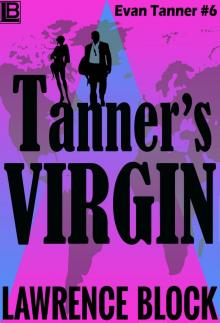 Tanners Virgin
Tanners Virgin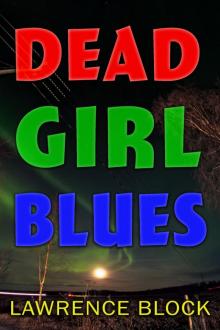 Dead Girl Blues
Dead Girl Blues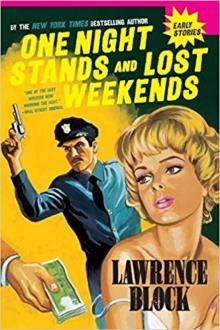 One Night Stands and Lost Weekends
One Night Stands and Lost Weekends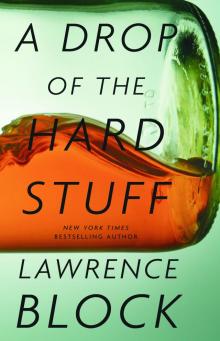 A Drop of the Hard Stuff
A Drop of the Hard Stuff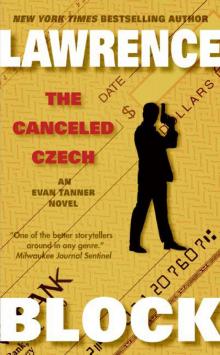 The Canceled Czech
The Canceled Czech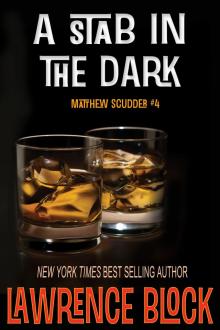 Even the Wicked
Even the Wicked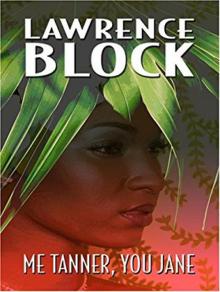 Me Tanner, You Jane
Me Tanner, You Jane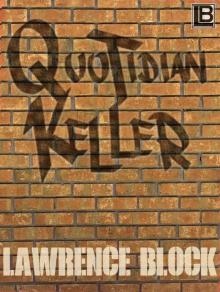 Quotidian Keller
Quotidian Keller Small Town
Small Town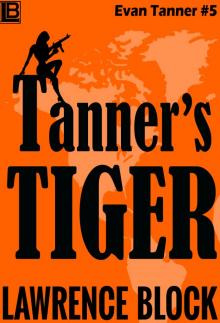 Tanners Tiger
Tanners Tiger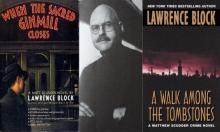 A Walk Among the Tombstones
A Walk Among the Tombstones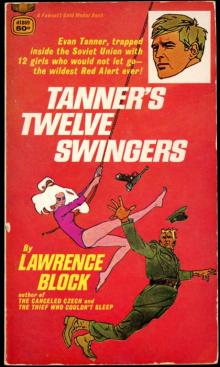 Tanners Twelve Swingers
Tanners Twelve Swingers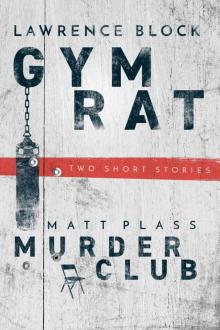 Gym Rat & the Murder Club
Gym Rat & the Murder Club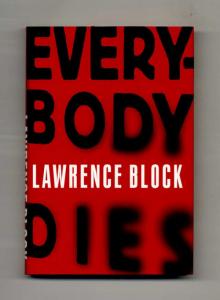 Everybody Dies
Everybody Dies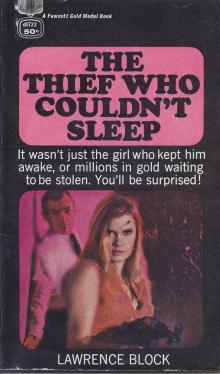 The Thief Who Couldnt Sleep
The Thief Who Couldnt Sleep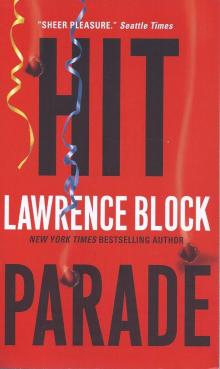 Hit Parade
Hit Parade The Devil Knows Youre Dead
The Devil Knows Youre Dead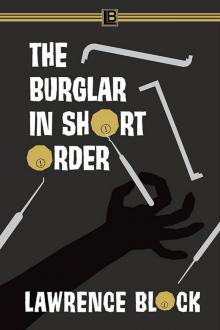 The Burglar in Short Order
The Burglar in Short Order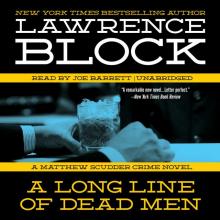 A Long Line of Dead Men
A Long Line of Dead Men Keller's Homecoming
Keller's Homecoming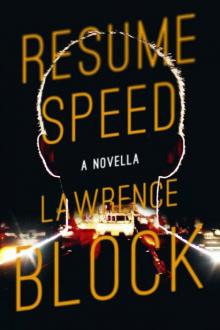 Resume Speed
Resume Speed Keller's Adjustment
Keller's Adjustment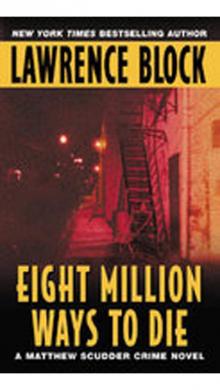 Eight Million Ways to Die
Eight Million Ways to Die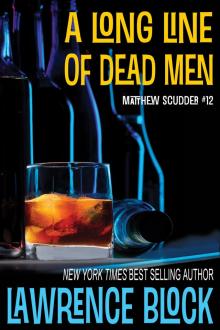 Time to Murder and Create
Time to Murder and Create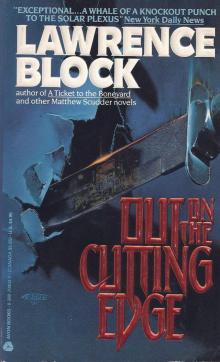 Out on the Cutting Edge
Out on the Cutting Edge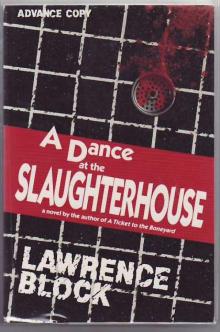 A Dance at the Slaughter House
A Dance at the Slaughter House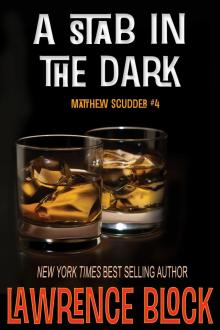 In the Midst of Death
In the Midst of Death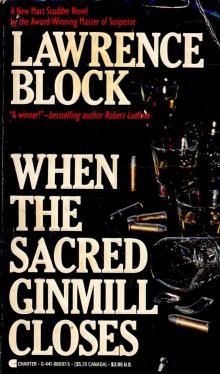 When the Sacred Ginmill Closes
When the Sacred Ginmill Closes You Could Call It Murder
You Could Call It Murder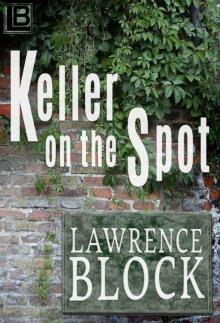 Keller on the Spot
Keller on the Spot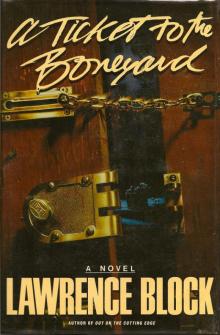 A Ticket to the Boneyard
A Ticket to the Boneyard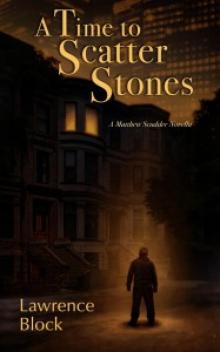 A Time to Scatter Stones
A Time to Scatter Stones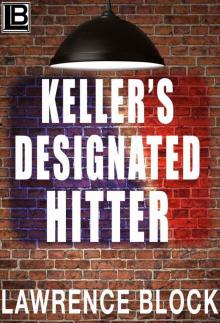 Keller's Designated Hitter
Keller's Designated Hitter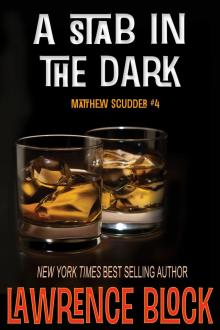 A Stab in the Dark
A Stab in the Dark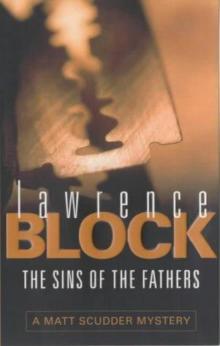 Sins of the Fathers
Sins of the Fathers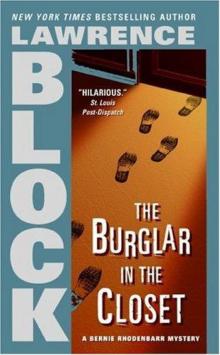 The Burglar in the Closet
The Burglar in the Closet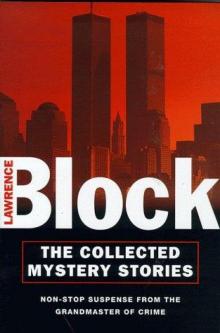 Burglar Who Dropped In On Elvis
Burglar Who Dropped In On Elvis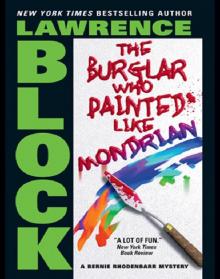 The Burglar Who Painted Like Mondrian
The Burglar Who Painted Like Mondrian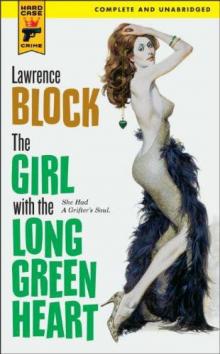 The Girl With the Long Green Heart
The Girl With the Long Green Heart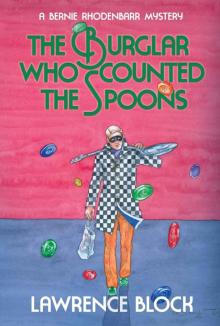 The Burglar Who Counted the Spoons (Bernie Rhodenbarr)
The Burglar Who Counted the Spoons (Bernie Rhodenbarr)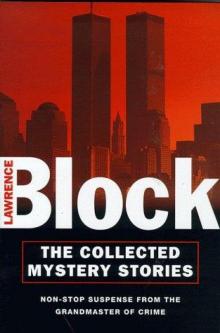 Burglar Who Smelled Smoke
Burglar Who Smelled Smoke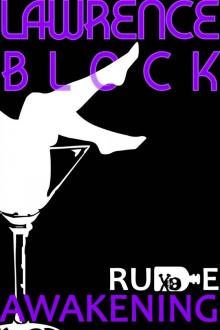 Rude Awakening (Kit Tolliver #2) (The Kit Tolliver Stories)
Rude Awakening (Kit Tolliver #2) (The Kit Tolliver Stories)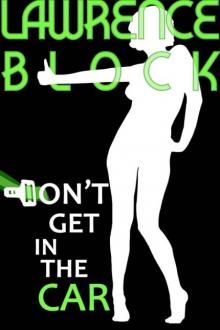 Don't Get in the Car (Kit Tolliver #9) (The Kit Tolliver Stories)
Don't Get in the Car (Kit Tolliver #9) (The Kit Tolliver Stories) CH04 - The Topless Tulip Caper
CH04 - The Topless Tulip Caper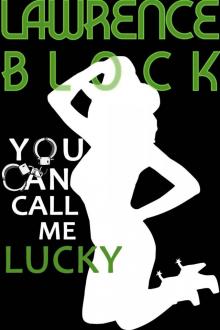 You Can Call Me Lucky (Kit Tolliver #3) (The Kit Tolliver Stories)
You Can Call Me Lucky (Kit Tolliver #3) (The Kit Tolliver Stories) CH02 - Chip Harrison Scores Again
CH02 - Chip Harrison Scores Again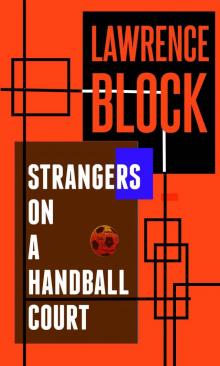 Strangers on a Handball Court
Strangers on a Handball Court Cleveland in My Dreams
Cleveland in My Dreams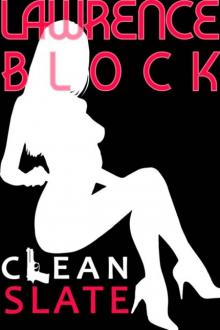 Clean Slate (Kit Tolliver #4) (The Kit Tolliver Stories)
Clean Slate (Kit Tolliver #4) (The Kit Tolliver Stories) The Burglar Who Traded Ted Williams
The Burglar Who Traded Ted Williams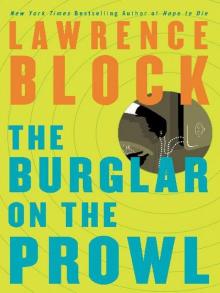 Burglar on the Prowl
Burglar on the Prowl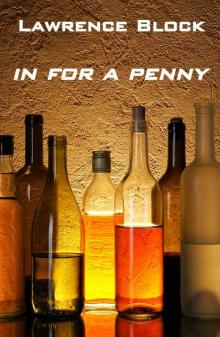 In For a Penny (A Story From the Dark Side)
In For a Penny (A Story From the Dark Side)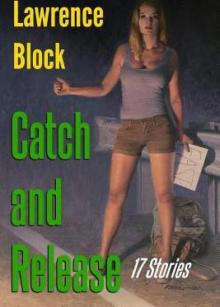 Catch and Release Paperback
Catch and Release Paperback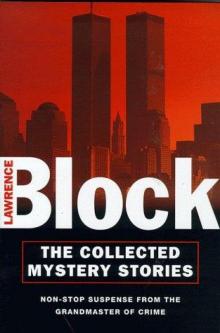 Ride A White Horse
Ride A White Horse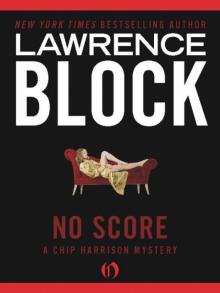 No Score
No Score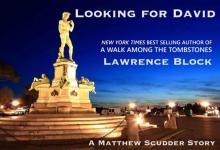 Looking for David (A Matthew Scudder Story Book 7)
Looking for David (A Matthew Scudder Story Book 7)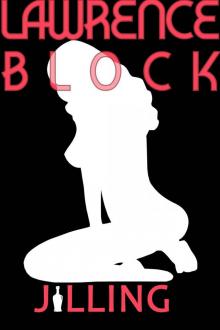 Jilling (Kit Tolliver #6) (The Kit Tolliver Stories)
Jilling (Kit Tolliver #6) (The Kit Tolliver Stories)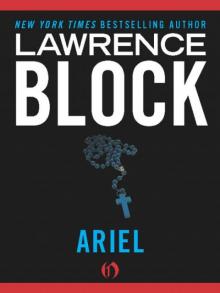 Ariel
Ariel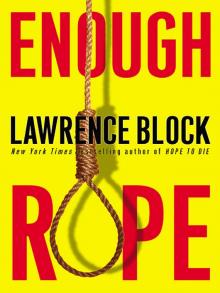 Enough Rope
Enough Rope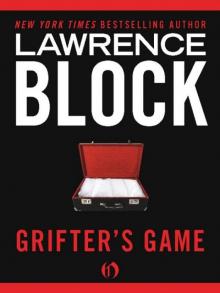 Grifter's Game
Grifter's Game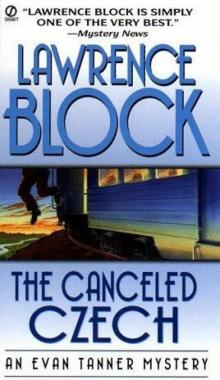 Canceled Czech
Canceled Czech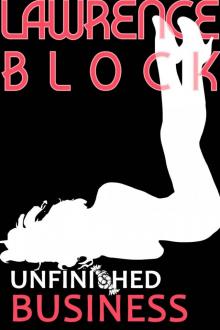 Unfinished Business (Kit Tolliver #12) (The Kit Tolliver Stories)
Unfinished Business (Kit Tolliver #12) (The Kit Tolliver Stories)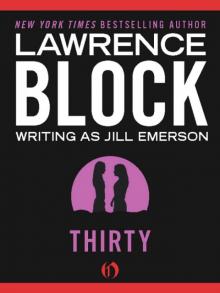 Thirty
Thirty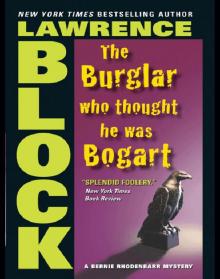 The Burglar Who Thought He Was Bogart
The Burglar Who Thought He Was Bogart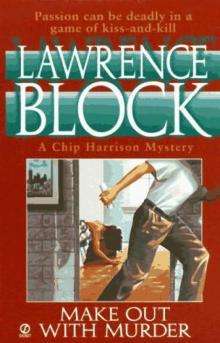 Make Out with Murder
Make Out with Murder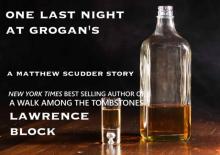 One Last Night at Grogan's (A Matthew Scudder Story Book 11)
One Last Night at Grogan's (A Matthew Scudder Story Book 11)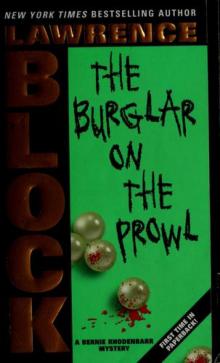 The Burglar on the Prowl
The Burglar on the Prowl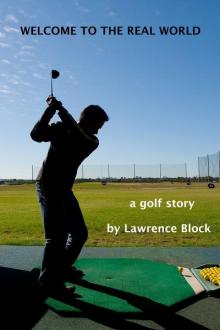 Welcome to the Real World (A Story From the Dark Side)
Welcome to the Real World (A Story From the Dark Side)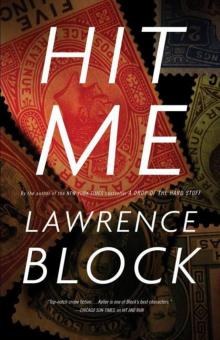 Keller 05 - Hit Me
Keller 05 - Hit Me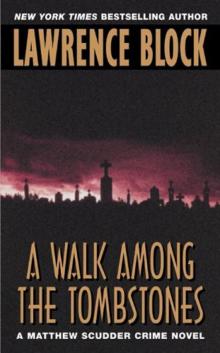 Walk Among the Tombstones: A Matthew Scudder Crime Novel
Walk Among the Tombstones: A Matthew Scudder Crime Novel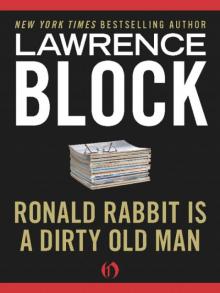 Ronald Rabbit Is a Dirty Old Man
Ronald Rabbit Is a Dirty Old Man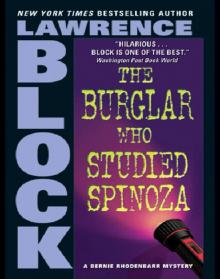 The Burglar Who Studied Spinoza
The Burglar Who Studied Spinoza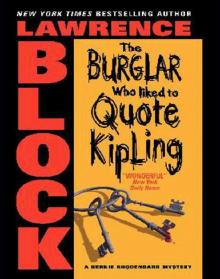 The Burglar Who Liked to Quote Kipling
The Burglar Who Liked to Quote Kipling Keller in Des Moines
Keller in Des Moines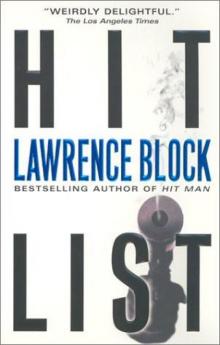 Hit List
Hit List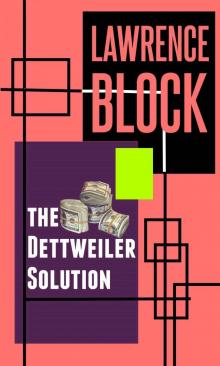 The Dettweiler Solution
The Dettweiler Solution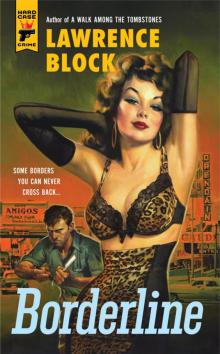 HCC 115 - Borderline
HCC 115 - Borderline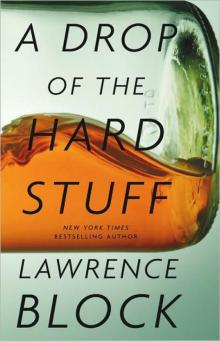 A Drop of the Hard Stuff: A Matthew Scudder Novel
A Drop of the Hard Stuff: A Matthew Scudder Novel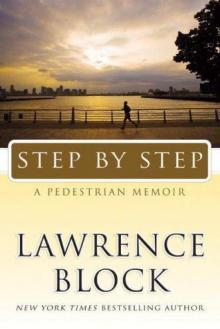 Step by Step
Step by Step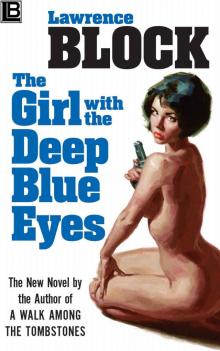 The Girl With the Deep Blue Eyes
The Girl With the Deep Blue Eyes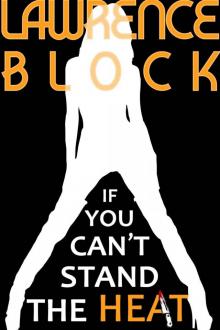 If You Can't Stand the Heat (Kit Tolliver #1) (The Kit Tolliver Stories)
If You Can't Stand the Heat (Kit Tolliver #1) (The Kit Tolliver Stories)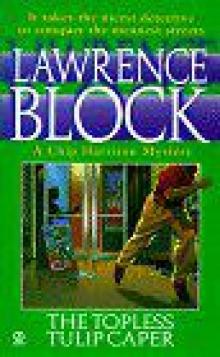 The Topless Tulip Caper
The Topless Tulip Caper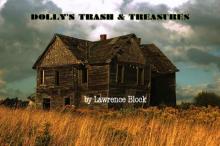 Dolly's Trash & Treasures (A Story From the Dark Side)
Dolly's Trash & Treasures (A Story From the Dark Side)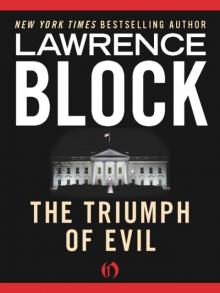 The Triumph of Evil
The Triumph of Evil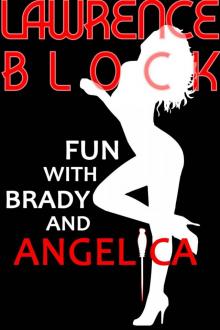 Fun with Brady and Angelica (Kit Tolliver #10 (The Kit Tolliver Stories)
Fun with Brady and Angelica (Kit Tolliver #10 (The Kit Tolliver Stories)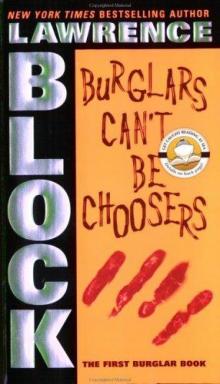 Burglars Can't Be Choosers
Burglars Can't Be Choosers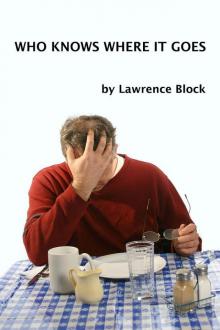 Who Knows Where It Goes (A Story From the Dark Side)
Who Knows Where It Goes (A Story From the Dark Side)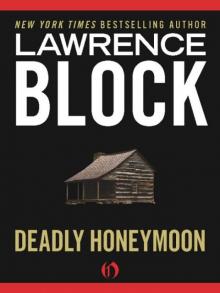 Deadly Honeymoon
Deadly Honeymoon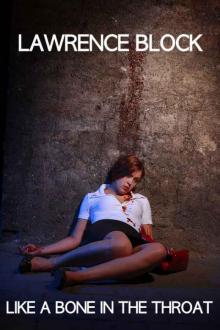 Like a Bone in the Throat (A Story From the Dark Side)
Like a Bone in the Throat (A Story From the Dark Side)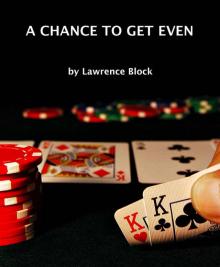 A Chance to Get Even (A Story From the Dark Side)
A Chance to Get Even (A Story From the Dark Side)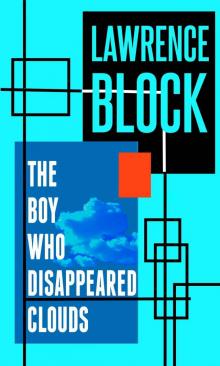 The Boy Who Disappeared Clouds
The Boy Who Disappeared Clouds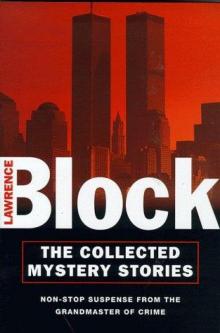 Collecting Ackermans
Collecting Ackermans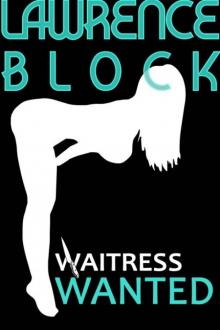 Waitress Wanted (Kit Tolliver #5) (The Kit Tolliver Stories)
Waitress Wanted (Kit Tolliver #5) (The Kit Tolliver Stories)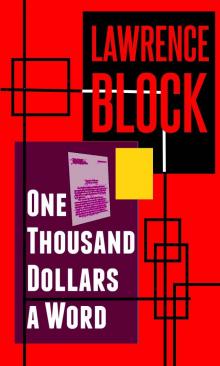 One Thousand Dollars a Word
One Thousand Dollars a Word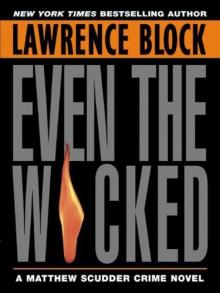 Even the Wicked: A Matthew Scudder Novel (Matthew Scudder Mysteries)
Even the Wicked: A Matthew Scudder Novel (Matthew Scudder Mysteries)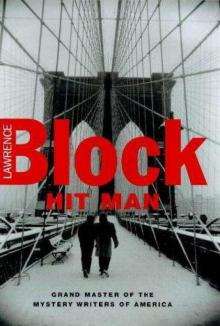 Hit Man
Hit Man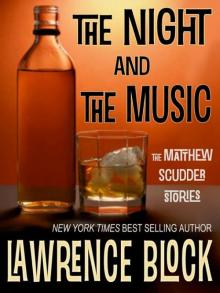 The Night and The Music
The Night and The Music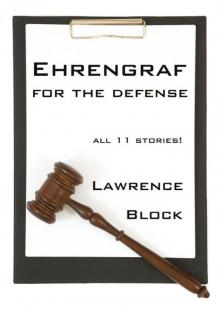 Ehrengraf for the Defense
Ehrengraf for the Defense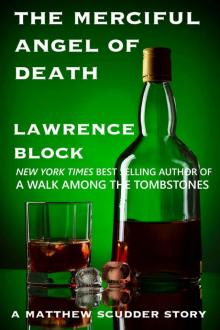 The Merciful Angel of Death (A Matthew Scudder Story Book 5)
The Merciful Angel of Death (A Matthew Scudder Story Book 5)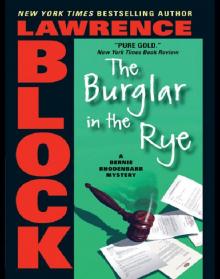 The Burglar in the Rye
The Burglar in the Rye I Know How to Pick 'Em
I Know How to Pick 'Em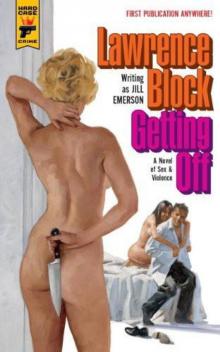 Getting Off hcc-69
Getting Off hcc-69 Three in the Side Pocket (A Story From the Dark Side)
Three in the Side Pocket (A Story From the Dark Side)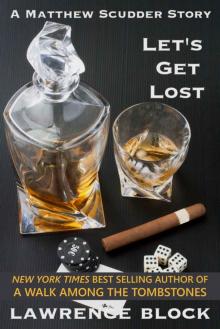 Let's Get Lost (A Matthew Scudder Story Book 8)
Let's Get Lost (A Matthew Scudder Story Book 8)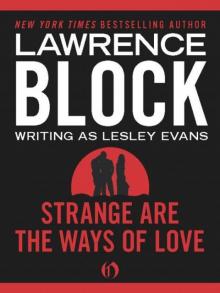 Strange Are the Ways of Love
Strange Are the Ways of Love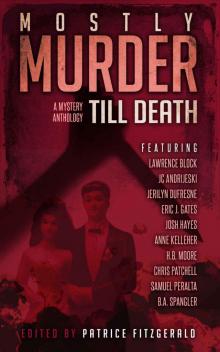 MOSTLY MURDER: Till Death: a mystery anthology
MOSTLY MURDER: Till Death: a mystery anthology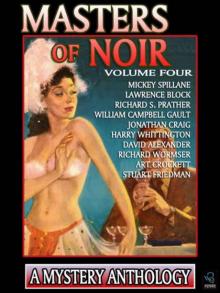 Masters of Noir: Volume Four
Masters of Noir: Volume Four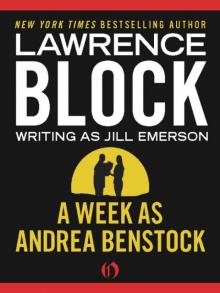 A Week as Andrea Benstock
A Week as Andrea Benstock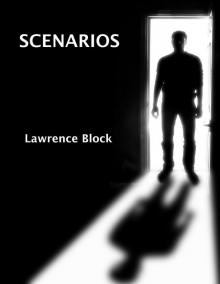 Scenarios (A Stoiry From the Dark Side)
Scenarios (A Stoiry From the Dark Side)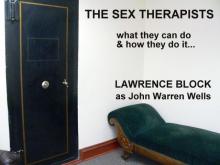 The Sex Therapists: What They Can Do and How They Do It (John Warren Wells on Sexual Behavior Book 15)
The Sex Therapists: What They Can Do and How They Do It (John Warren Wells on Sexual Behavior Book 15)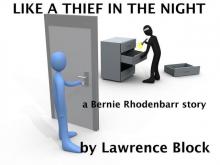 Like a Thief in the Night: a Bernie Rhodenbarr story
Like a Thief in the Night: a Bernie Rhodenbarr story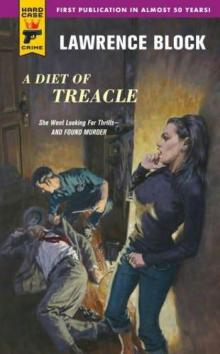 A Diet of Treacle
A Diet of Treacle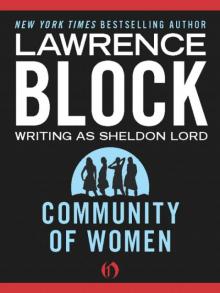 Community of Women
Community of Women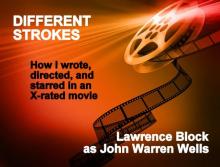 Different Strokes: How I (Gulp!) Wrote, Directed, and Starred in an X-rated Movie (John Warren Wells on Sexual Behavior)
Different Strokes: How I (Gulp!) Wrote, Directed, and Starred in an X-rated Movie (John Warren Wells on Sexual Behavior)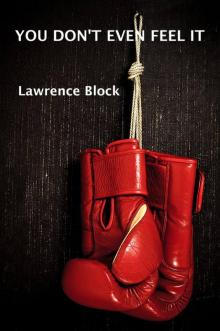 You Don't Even Feel It (A Story From the Dark Side)
You Don't Even Feel It (A Story From the Dark Side)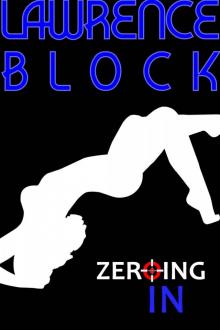 Zeroing In (Kit Tolliver #11) (The Kit Tolliver Stories)
Zeroing In (Kit Tolliver #11) (The Kit Tolliver Stories)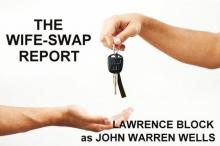 The Wife-Swap Report (John Warren Wells on Sexual Behavior)
The Wife-Swap Report (John Warren Wells on Sexual Behavior)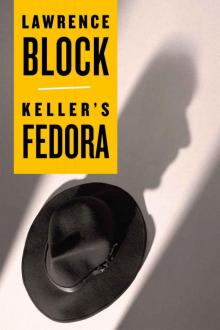 Keller's Fedora (Kindle Single)
Keller's Fedora (Kindle Single)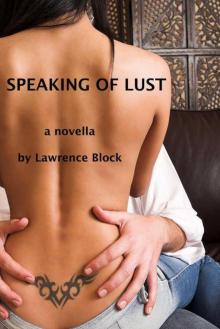 Speaking of Lust
Speaking of Lust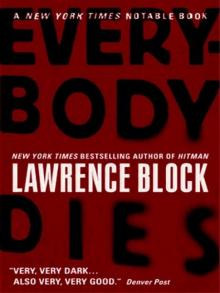 Everybody Dies (Matthew Scudder)
Everybody Dies (Matthew Scudder)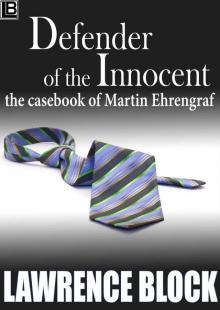 Defender of the Innocent: The Casebook of Martin Ehrengraf
Defender of the Innocent: The Casebook of Martin Ehrengraf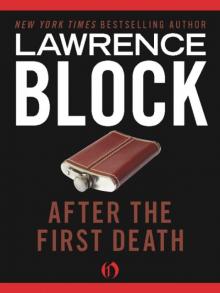 After the First Death
After the First Death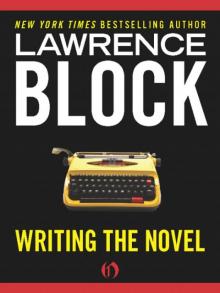 Writing the Novel
Writing the Novel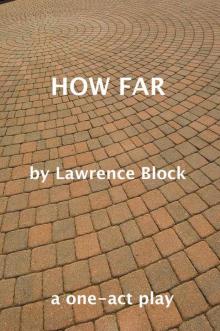 How Far - a one-act stage play
How Far - a one-act stage play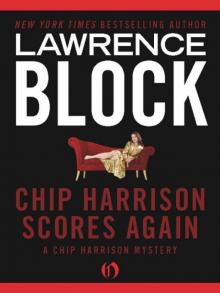 Chip Harrison Scores Again
Chip Harrison Scores Again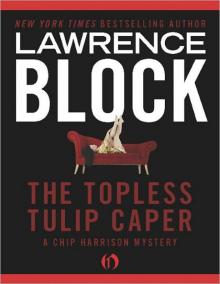 The Topless Tulip Caper ch-4
The Topless Tulip Caper ch-4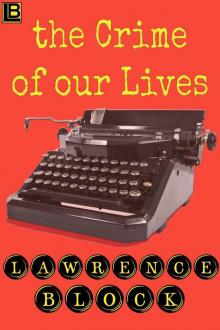 The Crime of Our Lives
The Crime of Our Lives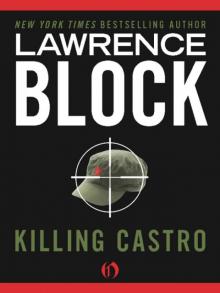 Killing Castro
Killing Castro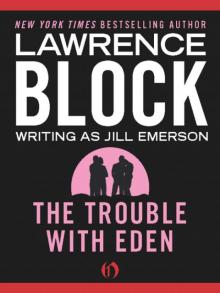 The Trouble with Eden
The Trouble with Eden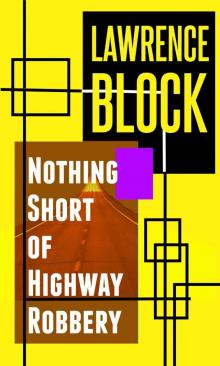 Nothing Short of Highway Robbery
Nothing Short of Highway Robbery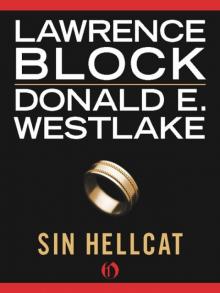 Sin Hellcat
Sin Hellcat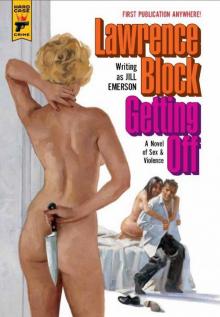 Getting Off: A Novel of Sex & Violence (Hard Case Crime)
Getting Off: A Novel of Sex & Violence (Hard Case Crime)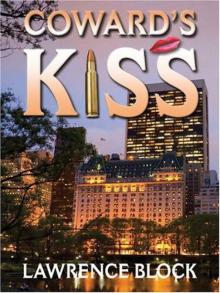 Coward's Kiss
Coward's Kiss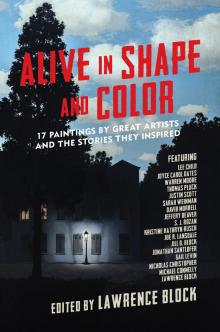 Alive in Shape and Color
Alive in Shape and Color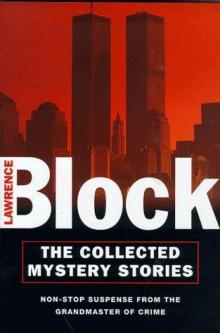 Blow for Freedom
Blow for Freedom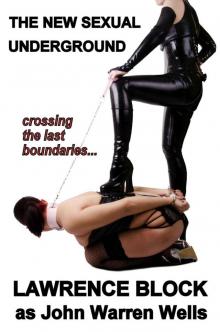 The New Sexual Underground: Crossing the Last Boundaries (John Warren Wells on Sexual Behavior Book 10)
The New Sexual Underground: Crossing the Last Boundaries (John Warren Wells on Sexual Behavior Book 10)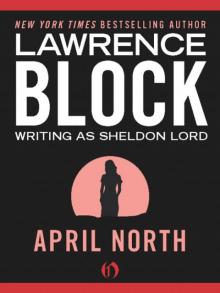 April North
April North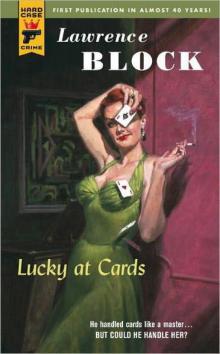 Lucky at Cards
Lucky at Cards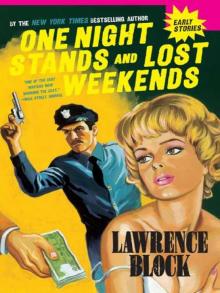 One Night Stands; Lost weekends
One Night Stands; Lost weekends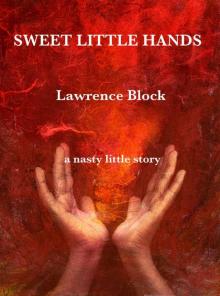 Sweet Little Hands (A Story From the Dark Side)
Sweet Little Hands (A Story From the Dark Side)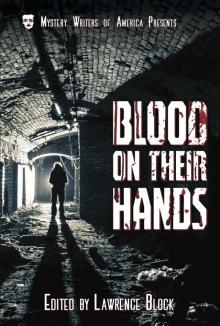 Blood on Their Hands
Blood on Their Hands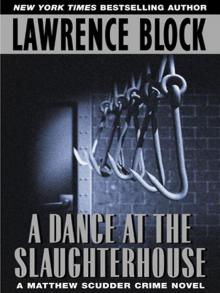 A Dance at the Slaughterhouse
A Dance at the Slaughterhouse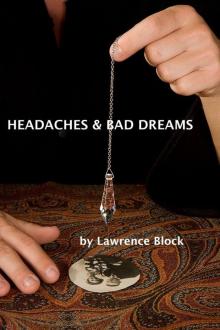 Headaches and Bad Dreams (A Story From the Dark Side)
Headaches and Bad Dreams (A Story From the Dark Side)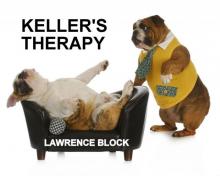 Keller's Therapy
Keller's Therapy The Specialists
The Specialists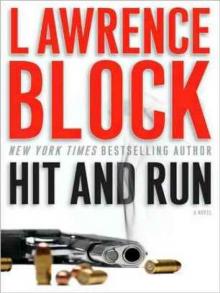 Hit and Run jk-4
Hit and Run jk-4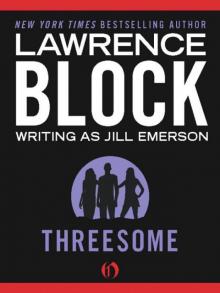 Threesome
Threesome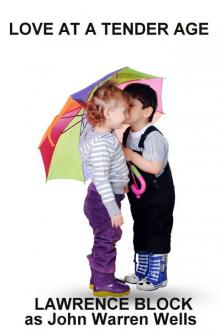 Love at a Tender Age (John Warren Wells on Sexual Behavior)
Love at a Tender Age (John Warren Wells on Sexual Behavior)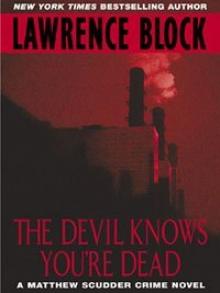 The Devil Knows You're Dead: A MATTHEW SCUDDER CRIME NOVEL
The Devil Knows You're Dead: A MATTHEW SCUDDER CRIME NOVEL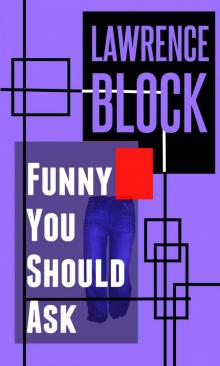 Funny You Should Ask
Funny You Should Ask CH01 - No Score
CH01 - No Score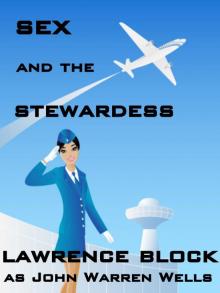 Sex and the Stewardess (John Warren Wells on Sexual Behavior)
Sex and the Stewardess (John Warren Wells on Sexual Behavior)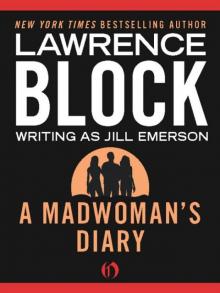 A Madwoman's Diary
A Madwoman's Diary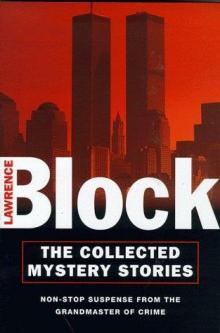 When This Man Dies
When This Man Dies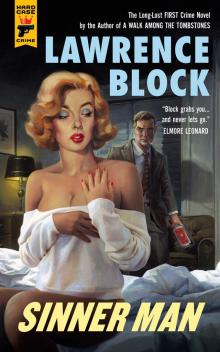 Sinner Man
Sinner Man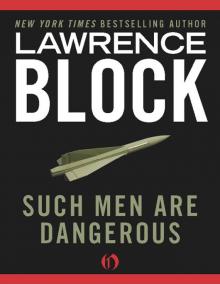 Such Men Are Dangerous
Such Men Are Dangerous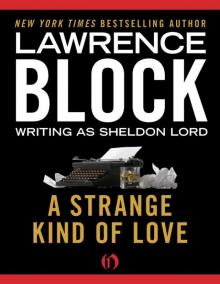 A Strange Kind of Love
A Strange Kind of Love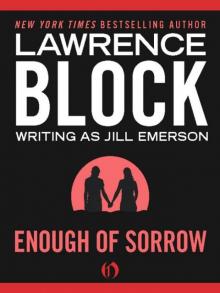 Enough of Sorrow
Enough of Sorrow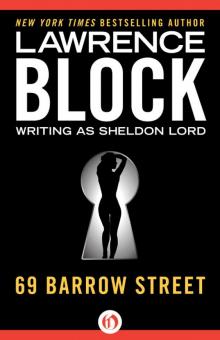 69 Barrow Street
69 Barrow Street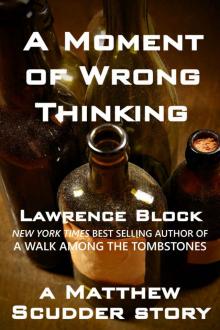 A Moment of Wrong Thinking (Matthew Scudder Mysteries Series Book 9)
A Moment of Wrong Thinking (Matthew Scudder Mysteries Series Book 9)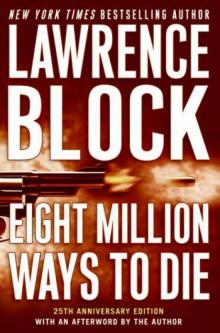 Eight Million Ways to Die ms-5
Eight Million Ways to Die ms-5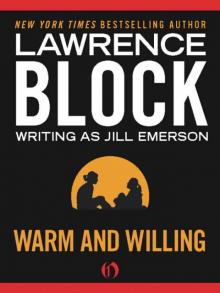 Warm and Willing
Warm and Willing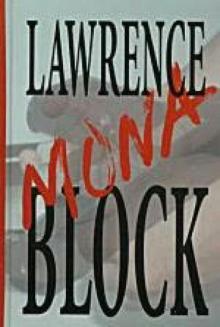 Mona
Mona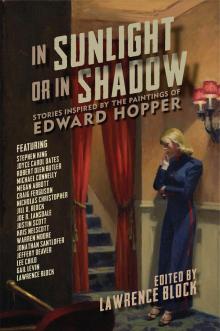 In Sunlight or In Shadow
In Sunlight or In Shadow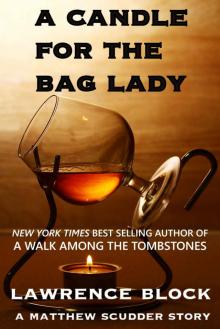 A Candle for the Bag Lady (Matthew Scudder Book 2)
A Candle for the Bag Lady (Matthew Scudder Book 2)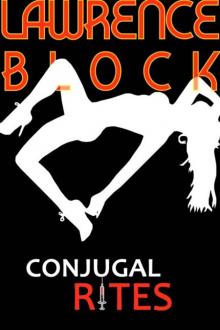 Conjugal Rites (Kit Tolliver #7) (The Kit Tolliver Stories)
Conjugal Rites (Kit Tolliver #7) (The Kit Tolliver Stories)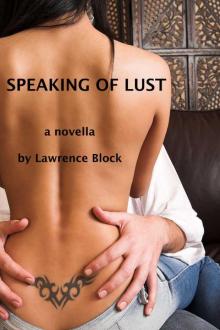 Speaking of Lust - the novella
Speaking of Lust - the novella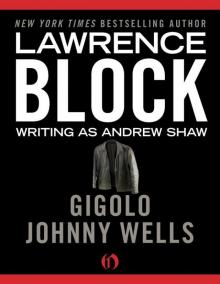 Gigolo Johnny Wells
Gigolo Johnny Wells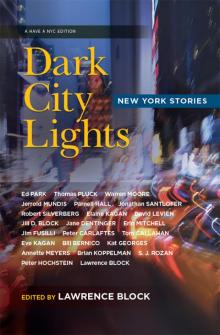 Dark City Lights
Dark City Lights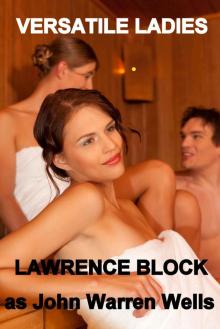 Versatile Ladies: the bisexual option (John Warren Wells on Sexual Behavior)
Versatile Ladies: the bisexual option (John Warren Wells on Sexual Behavior)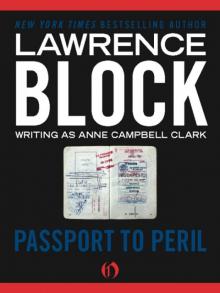 Passport to Peril
Passport to Peril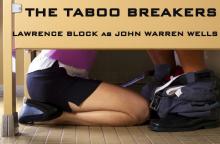 The Taboo Breakers: Shock Troops of the Sexual Revolution (John Warren Wells on Sexual Behavior)
The Taboo Breakers: Shock Troops of the Sexual Revolution (John Warren Wells on Sexual Behavior)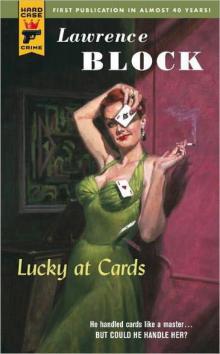 Lucky at Cards hcc-28
Lucky at Cards hcc-28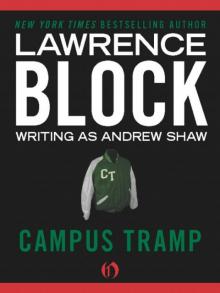 Campus Tramp
Campus Tramp 3 is Not a Crowd (John Warren Wells on Sexual Behavior)
3 is Not a Crowd (John Warren Wells on Sexual Behavior)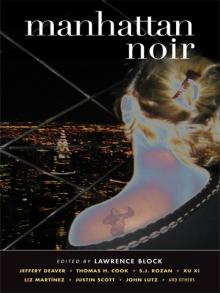 Manhattan Noir
Manhattan Noir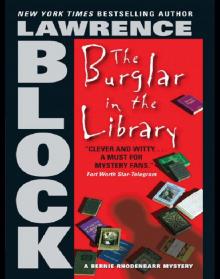 The Burglar in the Library
The Burglar in the Library Doing It! - Going Beyond the Sexual Revolution (John Warren Wells on Sexual Behavior Book 13)
Doing It! - Going Beyond the Sexual Revolution (John Warren Wells on Sexual Behavior Book 13)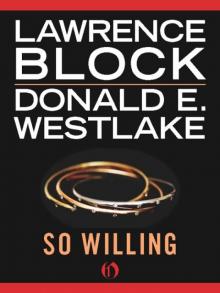 So Willing
So Willing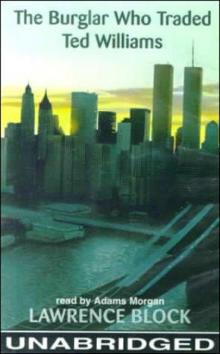 The Burglar Who Traded Ted Williams br-6
The Burglar Who Traded Ted Williams br-6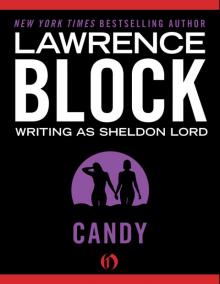 Candy
Candy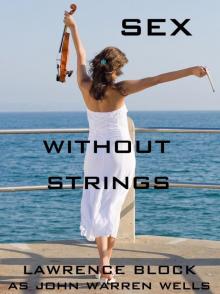 Sex Without Strings: A Handbook for Consenting Adults (John Warren Wells on Sexual Behavior)
Sex Without Strings: A Handbook for Consenting Adults (John Warren Wells on Sexual Behavior)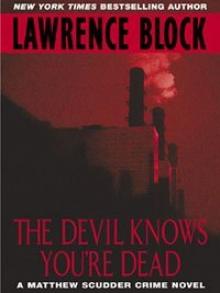 The Devil Knows You're Dead: A MATTHEW SCUDDER CRIME NOVEL (Matthew Scudder Mysteries)
The Devil Knows You're Dead: A MATTHEW SCUDDER CRIME NOVEL (Matthew Scudder Mysteries)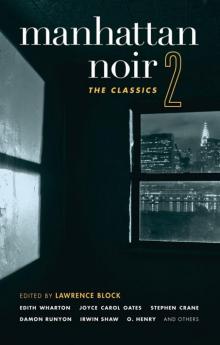 Manhattan Noir 2
Manhattan Noir 2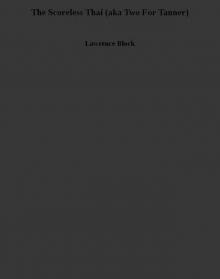 The Scoreless Thai (aka Two For Tanner)
The Scoreless Thai (aka Two For Tanner)